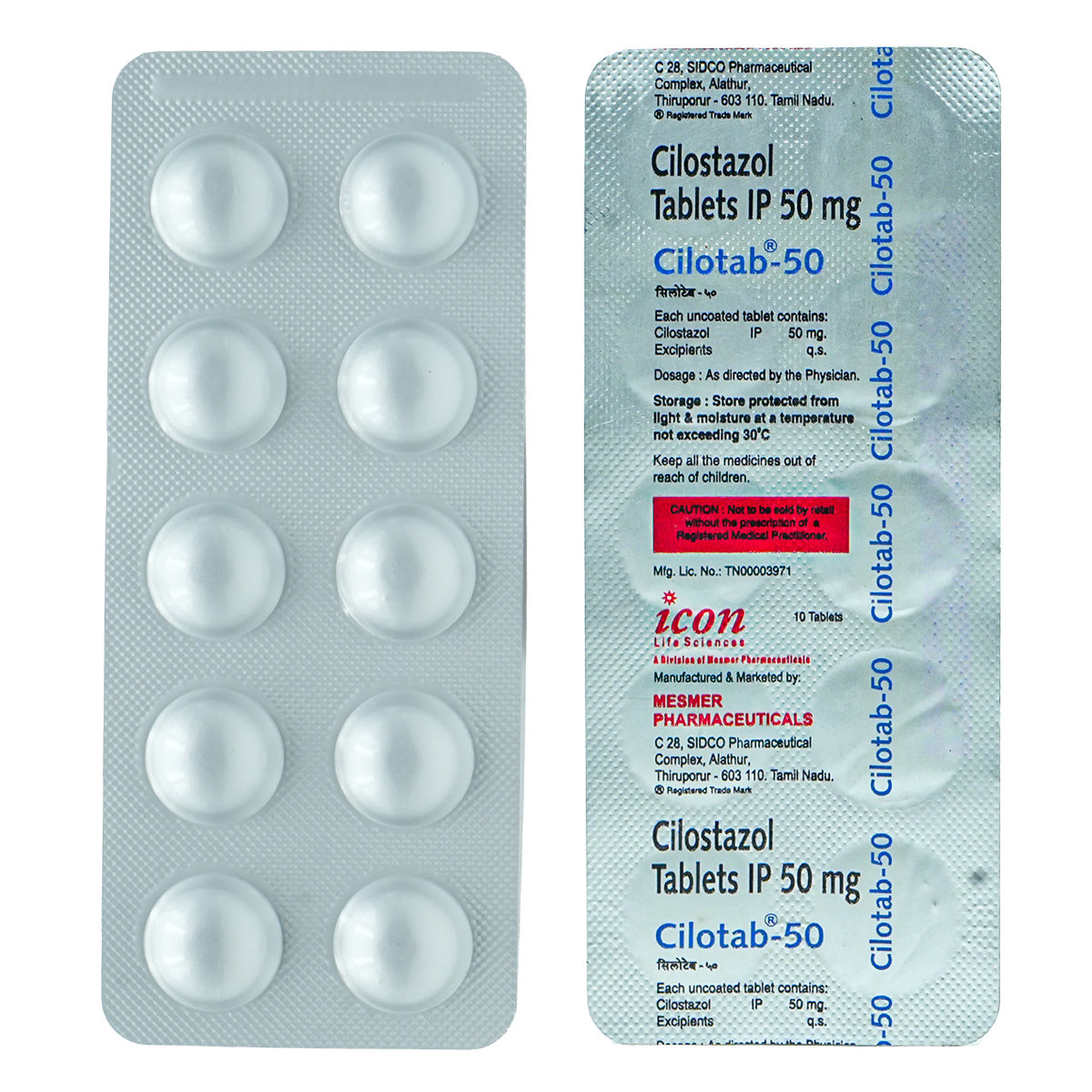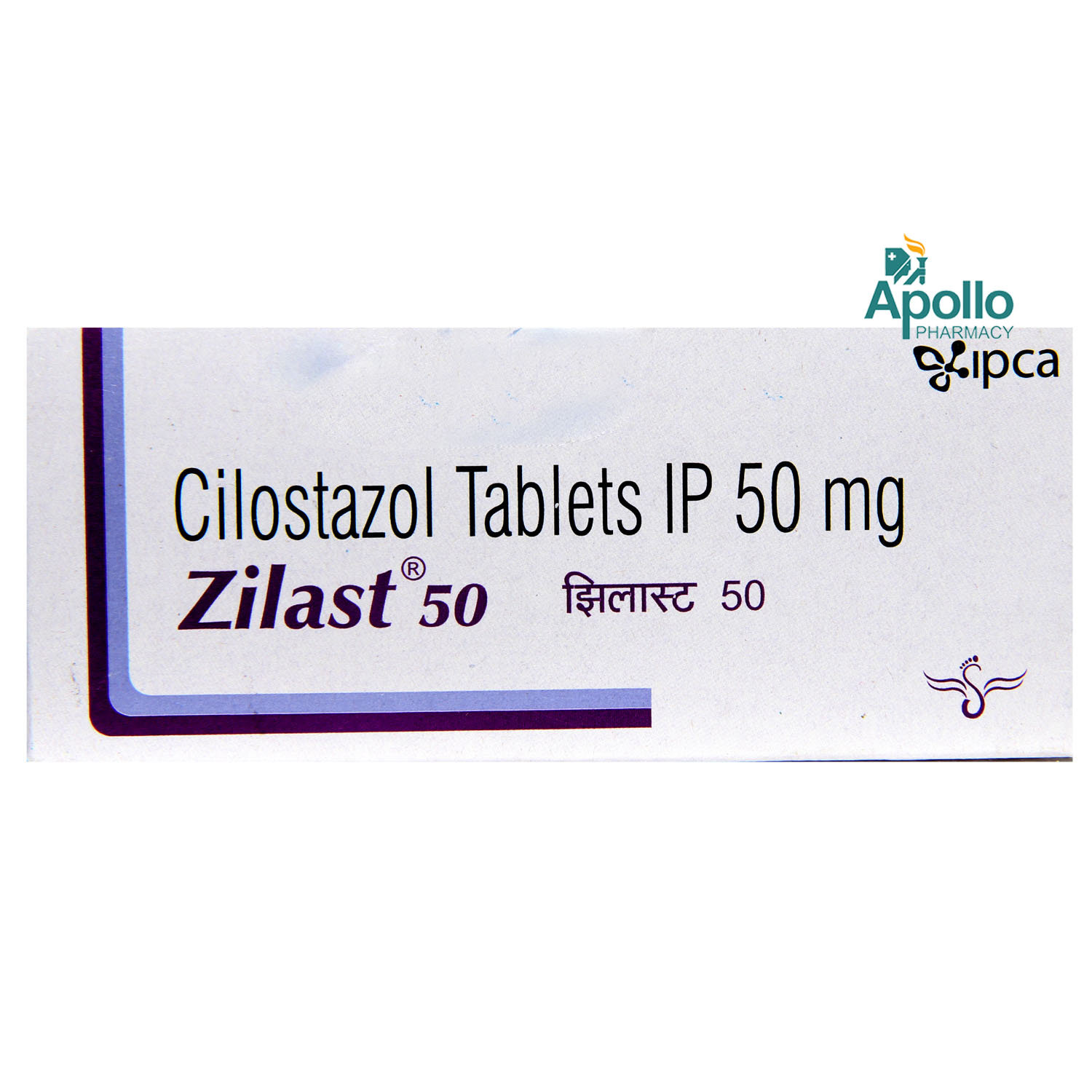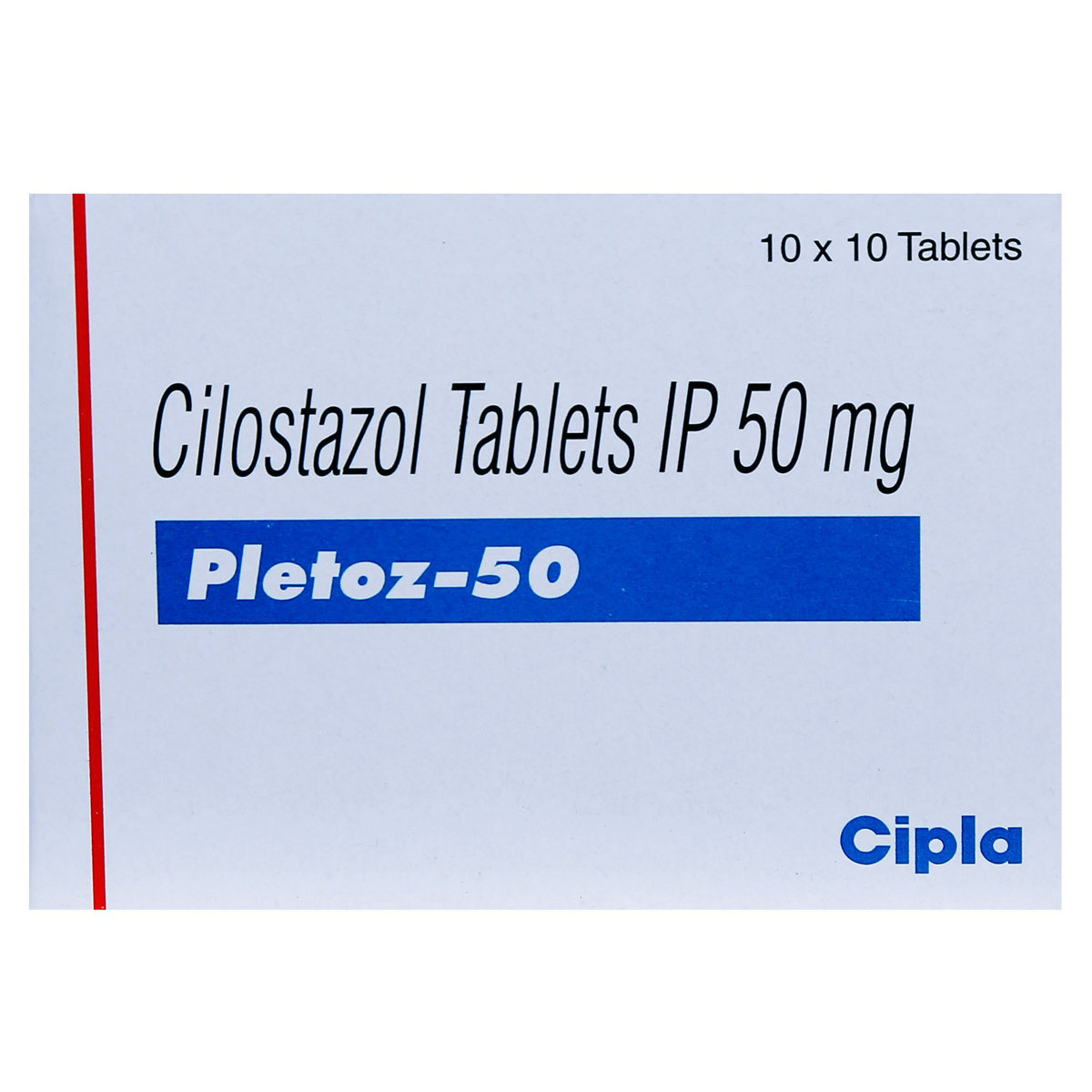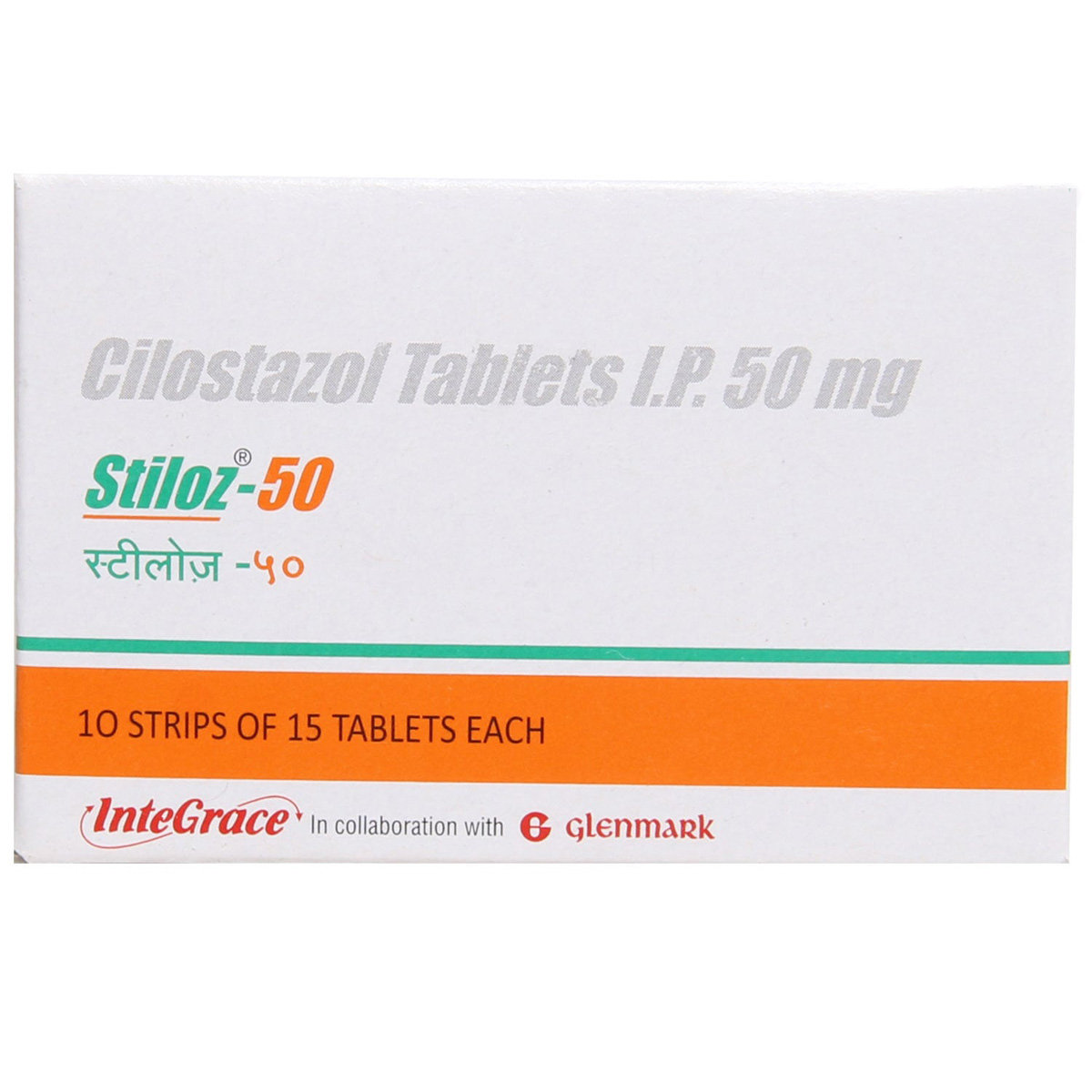Cilodoc 50 Tablet 10's

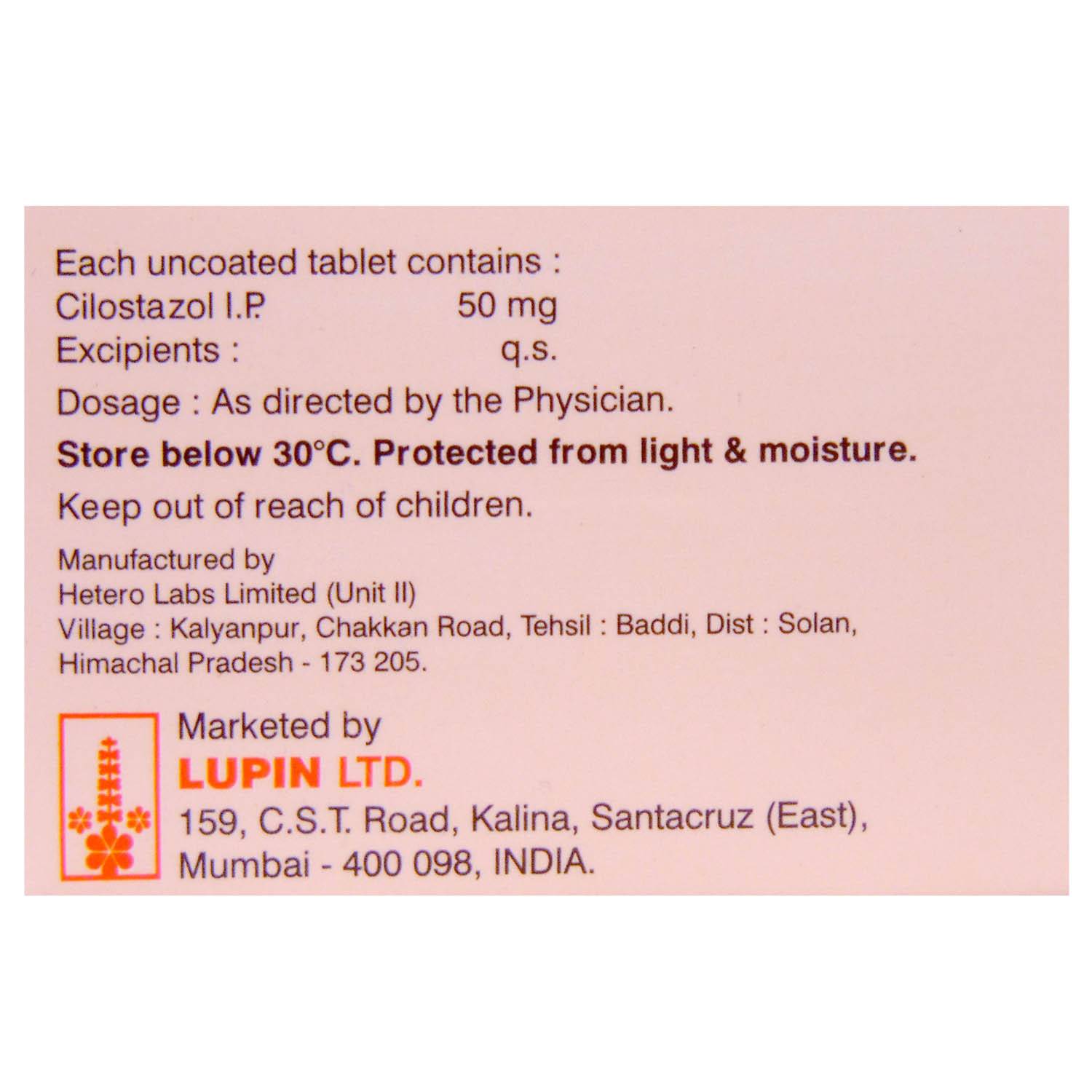
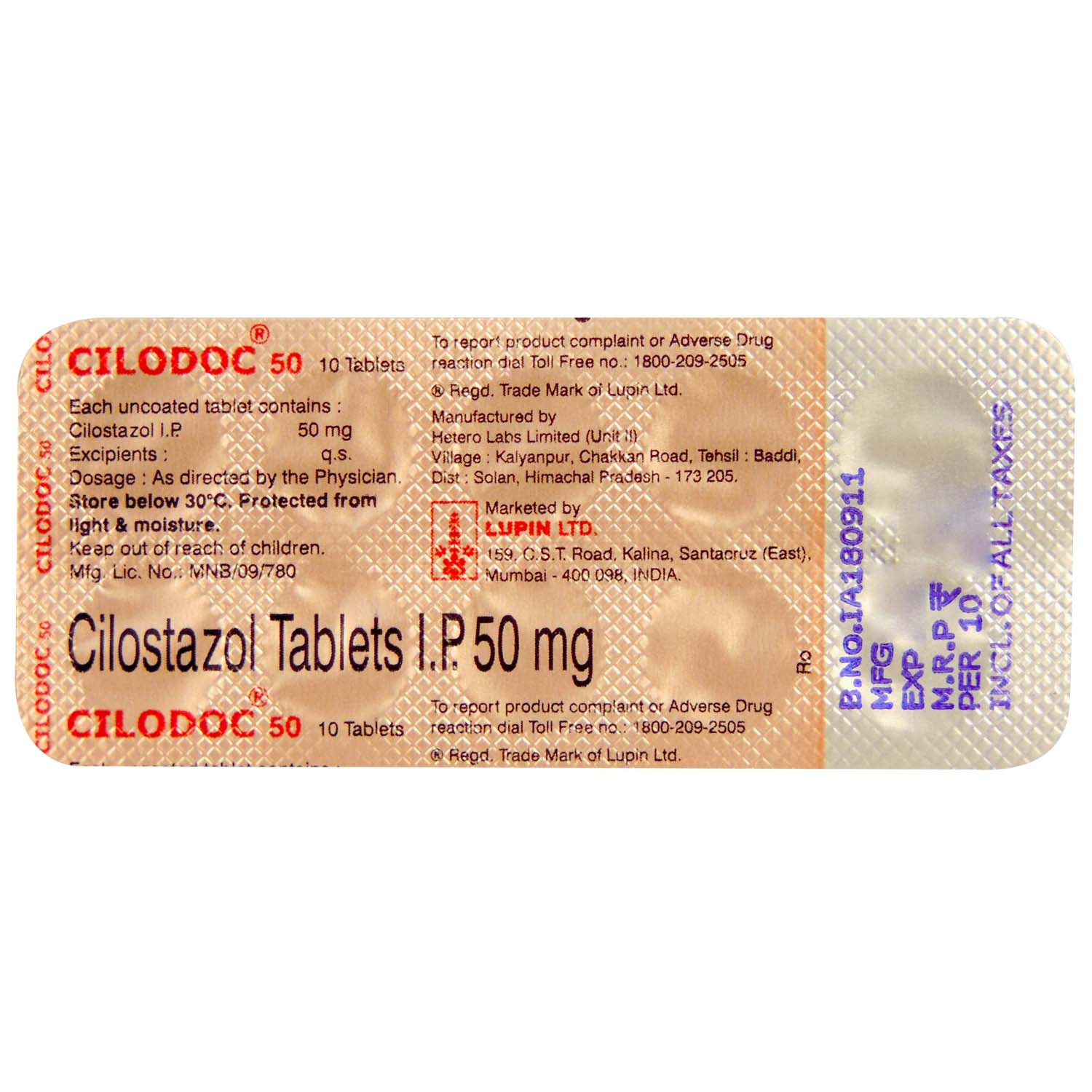
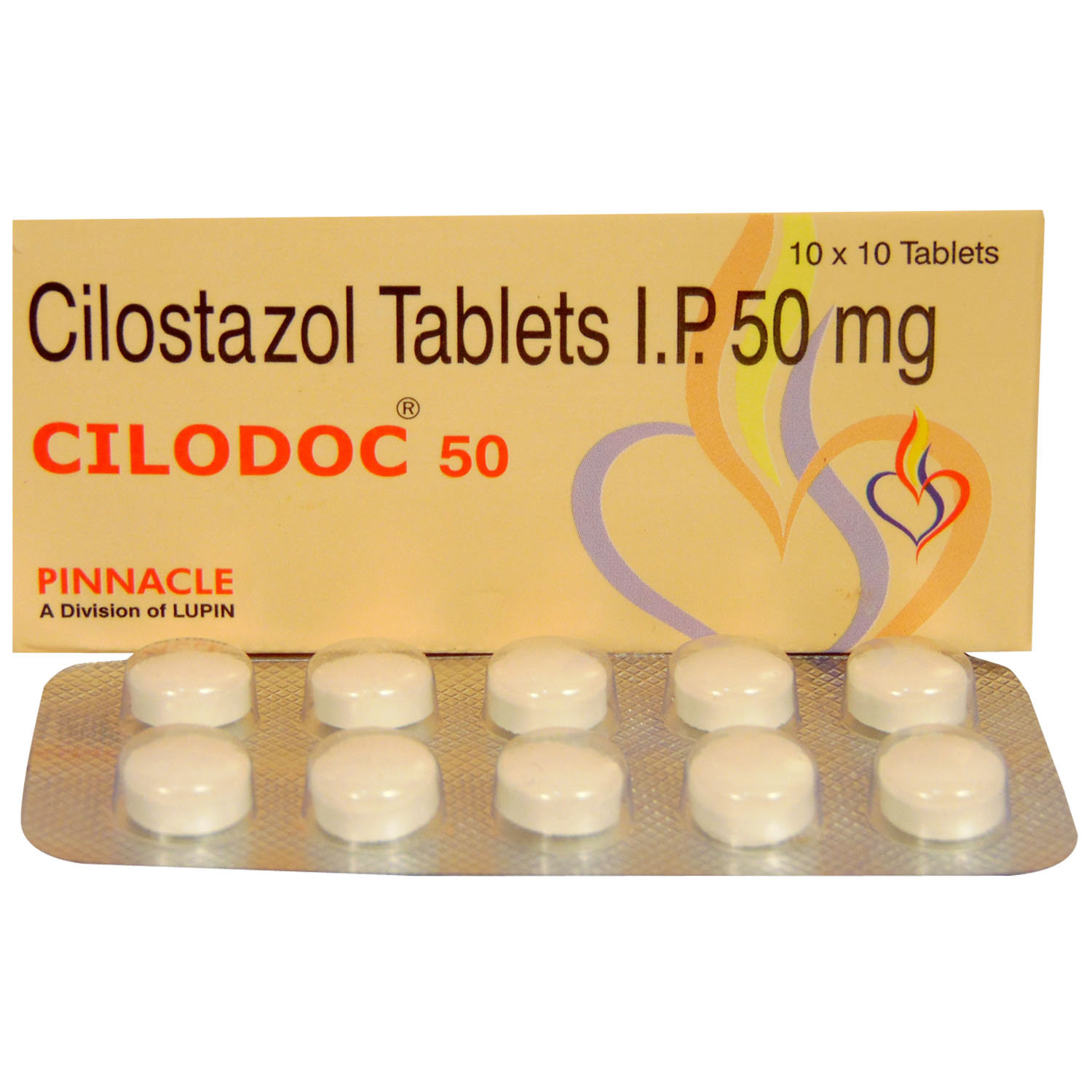
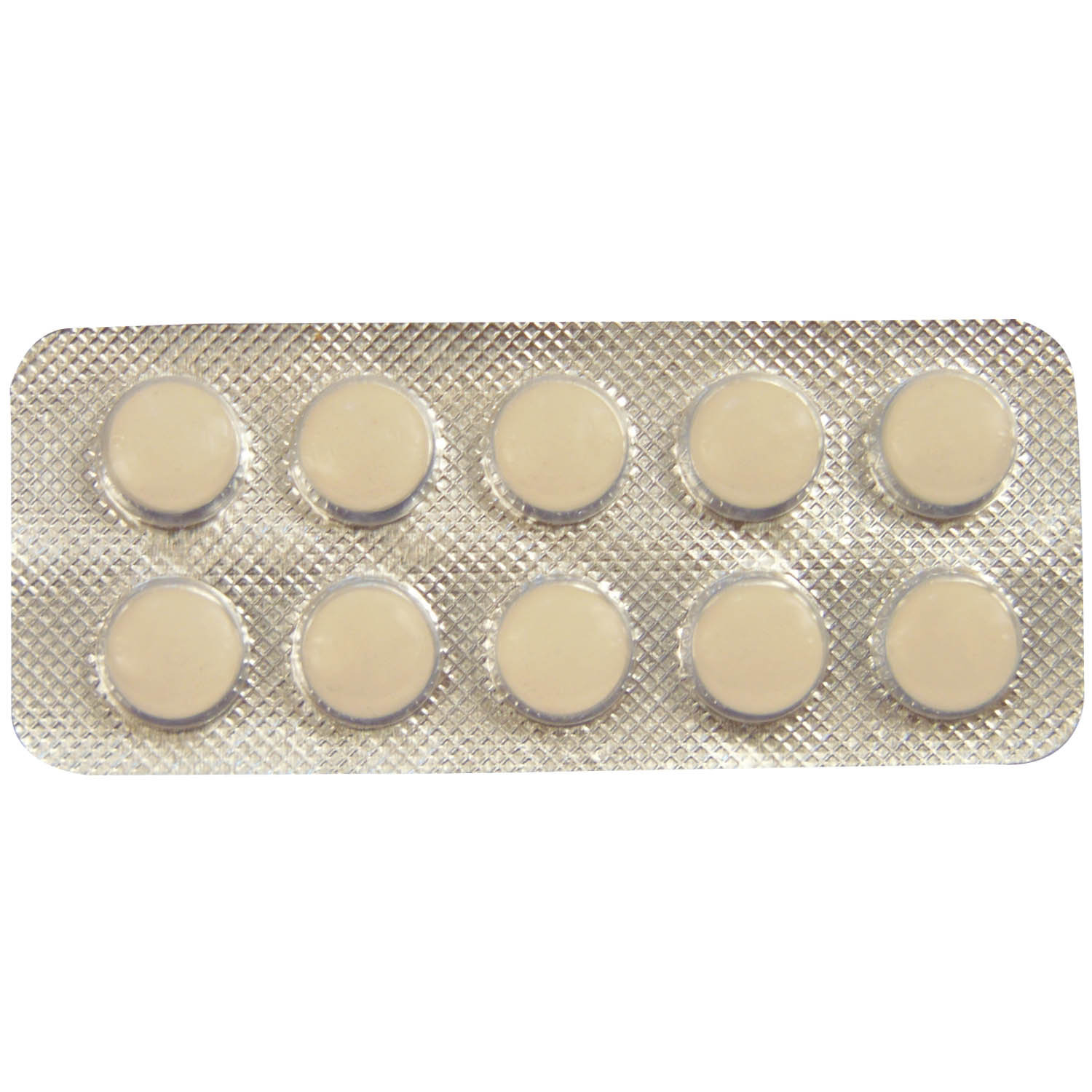






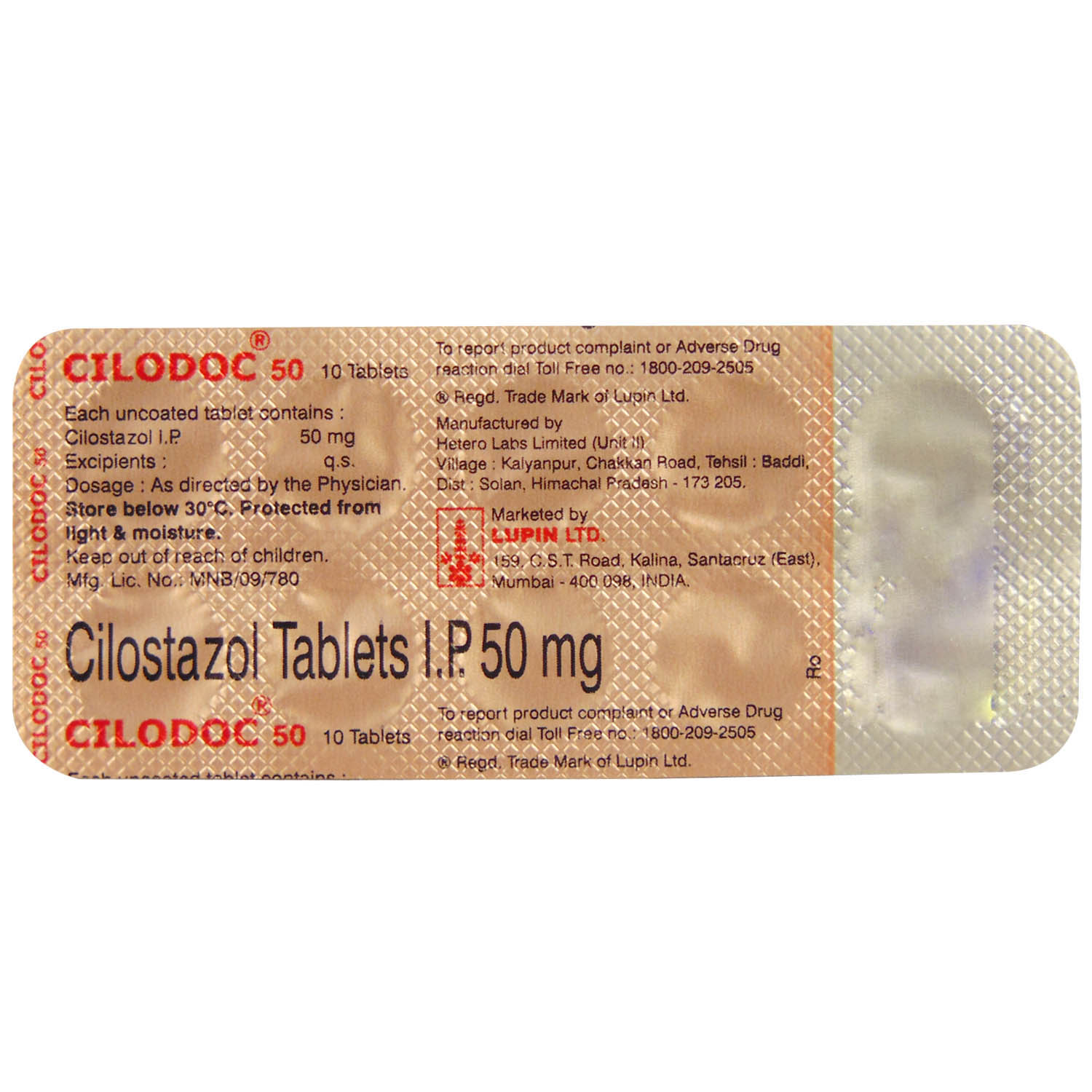
MRP ₹301
(Inclusive of all Taxes)
₹45.1 Cashback (15%)
Selected Pack Size:10
10 ₹270.9
(₹27.09 per unit)
Out of stock
15 ₹279.5
(₹18.63 per unit)
In Stock
Provide Delivery Location
Online payment accepted
 Prescription drug
Prescription drugWhats That
Composition :
Manufacturer/Marketer :
Consume Type :
Return Policy :
Expires on or after :
About Cilodoc 50 Tablet
Cilodoc 50 Tablet contains vasodilator (blood vessel widening) medication, Cilostazole, which is primarily used to treat pain in the legs due to insufficient blood flow (intermittent claudication). It also reduces cramping, numbness or weakness in the legs on walking in such patients. Intermittent claudication is a peripheral vascular disease in which you have cramp-like pain in your legs when you walk and is caused by an insufficient blood supply in your legs.
Cilodoc 50 Tablet works by widening the blood vessel and reducing the blood clotting time, thereby decreasing stickiness in blood vessels. Hence, increasing the blood supply to the limbs. It can also increase the distance you can walk without pain since it improves your leg's blood circulation. It is recommended in patients whose pain has not improved even after lifestyle changes like quitting smoking and doing regular exercise.
Cilodoc 50 Tablet should be taken regularly in dose and duration as advised by the doctor. It would be best to take it on an empty stomach and at a fixed time every day. Your doctor will advise you on the exact dosage and how often you must take Cilodoc 50 Tablet based on your medical condition. In some cases, you may experience headaches, ankle swelling, diarrhoea, abnormal stools, vomiting, and nausea. Most of these side effects of Cilodoc 50 Tablet do not require medical attention and gradually resolve over time. However, if the side effects are persistent, reach out to your doctor.
Cilodoc 50 Tablet should not be stopped abruptly without consulting the doctor as it may lead to unpleasant side effects. Also, it is not suitable for some people. Inform your doctor before starting Cilodoc 50 Tablet if you have any kidney or liver disease, plan to become pregnant, or are breastfeeding. Also, lifestyle changes should be continued with Cilodoc 50 Tablet for best results. Do not take the Cilodoc 50 Tablet if you ever had heart failure, chest pain, heart disease, and blood pressure. Before taking the Cilodoc 50 Tablet , inform your doctor about your medical history and ongoing therapies to rule out any potential adverse effects or interactions.
Uses of Cilodoc 50 Tablet
Directions for Use
Medicinal Benefits
Cilodoc 50 Tablet contains, Cilostazole, which is a vasodilator that works by widening the blood vessel and reducing the blood clotting time, thereby decreasing stickiness in blood vessels. Hence, increasing the blood supply to the limbs. It can also increase the distance you can walk without pain since it improves your legs' blood circulation. It is recommended in patients whose pain has not improved even after lifestyle changes like quitting smoking and doing regular exercise.
Storage
- Hydrate your body: Drink enough water to prevent dehydration and headaches.
- Calm Your Mind: Deep breathing and meditation can help you relax and relieve stress.
- Rest and Recharge: Sleep for 7-8 hours to reduce headache triggers.
- Take rest: lie down in a quiet, dark environment.
- Cold or warm compresses can help reduce tension.
- Stay Upright: Maintain good posture to keep symptoms from getting worse.
- To treat headaches naturally, try acupuncture or massage therapy.
- Over-the-counter pain relievers include acetaminophen and ibuprofen.
- Prescription Assistance: Speak with your doctor about more substantial drug alternatives.
- Severe Headaches: Seek emergency medical assistance for sudden, severe headaches.
- Frequent Headaches: If you get reoccurring headaches, consult your doctor.
- Headaches with Symptoms: Seek medical attention if your headaches include fever, disorientation, or weakness.
- Inform Your Doctor: Notify your doctor immediately about your diarrhoea symptoms. This allows them to adjust your medication or provide guidance on managing side effects.
- Stay Hydrated: Drink plenty of fluids to replace lost water and electrolytes. Choose water, clear broth, and electrolyte-rich drinks. Avoid carbonated or caffeinated beverages to effectively rehydrate your body.
- Follow a Bland Diet: Eat easy-to-digest foods to help firm up your stool and settle your stomach. Try incorporating bananas, rice, applesauce, toast, plain crackers, and boiled vegetables into your diet.
- Avoid Trigger Foods: Steer clear of foods that can worsen diarrhoea, such as spicy, fatty, or greasy foods, high-fibre foods, and dairy products (especially if you're lactose intolerant).
- Practice Good Hygiene: Maintain good hygiene to prevent the spread of infection. To stay healthy, wash your hands frequently, clean and disinfect surfaces regularly, and avoid exchanging personal belongings with others.
- Take Anti-Diarrheal Medications: If your doctor advises, anti-diarrheal medications such as loperamide might help manage diarrhoea symptoms. Always follow your doctor's directions.
- Keep track of your diarrhoea symptoms. If they don't get better or worse or are accompanied by severe stomach pain, blood, or dehydration signs (like extreme thirst or dark urine), seek medical help.
- Your doctor may adjust the dose of your medication, discontinue, or switch to alternative medicines to manage your symptoms.
- Drink plenty of water and caffeine-free drinks.
- Eat more fibre by consuming fruits, vegetables, and whole grains.
- Avoid processed, spicy, or fatty foods.
- Try not to skip meals, delay eating, or eat too quickly.
- Regular exercise can help improve digestion and promote better stool movement.
- Wash your hands regularly with soap and water or use a hand sanitizer to prevent the spread of infections.
- Wear masks, gloves and other protective clothing.
- Cover sneezes and coughs with a medical mask or tissue or your elbow.
- Take vaccinations to enhance your immunity to specific diseases.
- Clean your utensils, linen and surfaces regularly.
- Consult your doctor if you experience nasal congestion, runny nose, or sinus pressure after taking medication.
- Your doctor may adjust your treatment plan by changing your medication, adding new medications, or providing guidance on managing your rhinitis symptoms.
- If advised by your doctor, use nasal decongestants or saline nasal sprays to help relieve nasal congestion.
- Practice good hygiene, including frequent handwashing, avoiding close contact with others, and avoiding sharing utensils or personal items.
- Stay hydrated by drinking plenty of water and other fluids to help thin out mucus and soothe your nasal passages.
- Drink warm fluids such as warm water with honey, broth, soup or herbal tea to soothe sore throat.
- Gargle with warm salt water.
- Suck on lozenges to increase the production of saliva and soothe your throat.
- Use a humidifier to soothe sore throat as it adds moisture to the air and makes breathing easier.
- Inform your doctor about dizziness symptoms. They may adjust your medication regimen or prescribe additional medications to manage symptoms.
- Follow your doctor's instructions for taking medication, and take it at the same time every day to minimize dizziness.
- When standing up, do so slowly and carefully to avoid sudden dizziness.
- Avoid making sudden movements, such as turning or bending quickly, which can exacerbate dizziness.
- Drink plenty of water throughout the day to stay hydrated and help alleviate dizziness symptoms.
- If you're feeling dizzy, sit or lie down and rest until the dizziness passes.
- Track when dizziness occurs and any factors that may trigger it, and share this information with your doctor to help manage symptoms.
Drug Warnings
Cilodoc 50 Tablet should not be given to the people allergic to Cilodoc 50 Tablet , have low blood pressure (less than 90 mm of Hg), have had a heart attack, kidney disease, liver disease, pregnant women or planning to get pregnant and breastfeeding women. Do not take Cilodoc 50 Tablet with grapefruit juice or St John wort plant as it might affect the absorption of Cilodoc 50 Tablet . Tell your doctor that you are using Cilodoc 50 Tablet before undergoing any dental or other surgery. Your doctor might stop this medicine before the surgery. It is best to take Cilodoc 50 Tablet on an empty stomach and at a fixed time every day. Cilodoc 50 Tablet should not be stopped abruptly without consulting the doctor as it may lead to unpleasant side effects. Also, lifestyle changes should be continued with Cilodoc 50 Tablet for best results and a speedy recovery.
Drug-Drug Interactions
Drug-Drug Interactions
Login/Sign Up
When Cilodoc 50 Tablet is taken with Thioridazine, can increase the risk of an irregular heart rhythm that may be serious.
How to manage the interaction:
Using Thioridazine with Cilodoc 50 Tablet is not recommended, but it can be taken if prescribed by a doctor. If you notice any of these signs - like sudden dizziness, lightheadedness, fainting, shortness of breath, or heart palpitations, call a doctor right away. Do not stop using any medications without a doctor's advice.
When Cilodoc 50 Tablet is taken with Pimozide, can increase the risk of an irregular heart rhythm that may be serious.
How to manage the interaction:
Using Pimozide with Cilodoc 50 Tablet is not generally advised, but it can be taken if prescribed by a doctor. If you notice any of these signs - like sudden dizziness, lightheadedness, fainting, shortness of breath, or heart palpitations, call a doctor right away. Do not stop using any medications without a doctor's advice.
When Cilodoc 50 Tablet is taken with Sparfloxacin, can increase the risk of an irregular heart rhythm that may be serious.
How to manage the interaction:
There may be a possibility of interaction between Sparfloxacin and Cilodoc 50 Tablet, but it can be taken if prescribed by a doctor. If you notice any of these signs - like sudden dizziness, lightheadedness, fainting, shortness of breath, or heart palpitations, call a doctor right away. Do not stop using any medications without a doctor's advice.
When Mesoridazine is taken with Cisapride, can increase the risk of an irregular heart rhythm that may be serious.
How to manage the interaction:
Using Mesoridazine with Cilodoc 50 Tablet, is not recommended but it can be taken if prescribed by a doctor. If you notice any of these signs - like sudden dizziness, lightheadedness, fainting, shortness of breath, or heart palpitations, call a doctor right away. Do not stop using any medications without a doctor's advice.
When Cilodoc 50 Tablet is taken with Cisapride, can increase the risk of an irregular heart rhythm that may be serious.
How to manage the interaction:
Using Cisapride and Cilodoc 50 Tablet is not recommended, but it can be taken if prescribed by a doctor. If you notice any of these signs - like sudden dizziness, lightheadedness, fainting, shortness of breath, or heart palpitations, call a doctor right away. Do not stop using any medications without a doctor's advice.
When Cilodoc 50 Tablet is taken with Ziprasidone, can increase the risk of an irregular heart rhythm that may be serious.
How to manage the interaction:
Using Ziprasidone and Cilodoc 50 Tablet is not recommended, but it can be taken if prescribed by a doctor. If you notice any of these signs - like sudden dizziness, lightheadedness, fainting, shortness of breath, or heart palpitations, call a doctor right away. Do not stop using any medications without a doctor's advice.
Co-administration of Dasatinib with Cilodoc 50 Tablet can increase the risk of bleeding.
How to manage the interaction:
Taking Dasatinib with Cilodoc 50 Tablet together can result in an interaction, it can be taken if a doctor has advised it. However, contact a doctor immediately if you experience any symptoms such as bruising, dizziness, red or black, tarry stools, severe headache, and weakness. Do not discontinue any medications without consulting a doctor.
Co-administration of sotalol with Cilodoc 50 Tablet can increase the risk or severity of irregular heart rhythms. The risk increases in patients with a history of heart illness or electrolyte imbalance.
How to manage the interaction:
Taking sotalol with Cilodoc 50 Tablet together can possibly result in an interaction, it can be taken if a doctor has advised it. However, contact a doctor immediately if you experience any symptoms such as dizziness, lightheadedness, fainting, shortness of breath, or rapid heartbeat. Do not discontinue any medications without consulting a doctor.
Co-administration of delavirdine with Cilodoc 50 Tablet may increase the risk of side effects.
How to manage the interaction:
Taking delavirdine with Cilodoc 50 Tablet together can possibly result in an interaction, it can be taken if your doctor has advised it. However, contact a doctor immediately if you experience any symptoms such as dizziness, lightheadedness, fainting, shortness of breath, or rapid heartbeat, nausea, diarrhea, bleeding. Do not discontinue any medications without consulting a doctor.
Coadministration of Fosaprepitant with Cilodoc 50 Tablet can increase the levels of Cilodoc 50 Tablet in the body. This increases the risk or severity of side effects.
How to manage the interaction:
Taking Fosaprepitant with Cilodoc 50 Tablet together can result in an interaction, it can be taken if your doctor has advised it. However, if you experience sudden dizziness, lightheadedness, fainting, shortness of breath, chest pain or tightness, rapid heartbeat, or nausea, diarrhea, bleeding, contact a doctor immediately. Do not discontinue any medications without consulting a doctor.
Drug-Food Interactions
Drug-Food Interactions
Login/Sign Up
Diet & Lifestyle Advise
- Exercising regularly helps in improving overall health. Take a break between exercises if you feel uneasy. Finding the right exercise is the key.
- Rest well, and get plenty of sleep.
- Take proper care of your legs and feet.
- Wear shoes that fit you well.
- Check your feet daily for any cracks or sores.
- Try to stay warm. Avoid cold temperatures.
- Avoid smoking and alcohol consumption.
- Meditation and yoga can help lower stress, decrease pain sensitivity and improves coping skills.
- Acupuncture can be helpful by stimulating pressure points.
- Using essential oils for massages can help increase circulation.
Side Effects of Cilodoc 50 Tablet
- Headaches
- Ankle swelling
- Diarrhoea
- Abnormal stools
- Vomiting
- Nausea
Habit Forming
Therapeutic Class
All Substitutes & Brand Comparisons
RX
Cilotab 50 mg Tablet 10's
Icon Life Sciences
₹117
(₹10.53 per unit)
61% CHEAPERRX
Zilast 50 Tablet 10's
Ipca Laboratories Ltd
₹165.5
(₹14.9 per unit)
44% CHEAPERRX
Pletoz 50 Tablet 10's
Cipla Ltd
₹185
(₹16.65 per unit)
38% CHEAPER
Product Substitutes
Drug-Diseases Interactions
Drug-Diseases Interactions
Login/Sign Up
FAQs
Drug-Drug Interactions Checker List
- ERYTHROMYCIN
- CLARITHROMYCIN
- RIFAMPICIN
- DILTIAZEM
- SIMVASTATIN
- BUSPIRONE
- LEVODOPA
- VALPROATE
Disease/Condition Glossary
Intermittent claudication: Intermittent claudication, also known as vascular claudication, is a symptom in which muscle pain or mild exertion occurs during exercise. The pain is generally felt in the calf muscle. Symptoms include cramp, ache, fatigue, and numbness.

Have a query?
Buy best Vascular System products by
Emcure Pharmaceuticals Ltd
Intas Pharmaceuticals Ltd
Lupin Ltd
Ozone Pharmaceuticals Ltd
Sun Pharmaceutical Industries Ltd
Cipla Ltd
Leeford Healthcare Ltd
Mercury Laboratories Ltd
Torrent Pharmaceuticals Ltd
FDC Ltd
Macleods Pharmaceuticals Ltd
Akumentis Healthcare Ltd
Dr Reddy's Laboratories Ltd
Indoco Remedies Ltd
Mankind Pharma Pvt Ltd
Oaknet Healthcare Pvt Ltd
Reliance Formulation Pvt Ltd
Samarth Life Sciences Pvt Ltd
Walter Bushnell
Wanbury Ltd
Abbott India Ltd
Eris Life Sciences Ltd
Galcare Pharmaceuticals Pvt Ltd
Juggat Pharma Ltd
Knoll Pharmaceuticals Ltd
Kontest Pharmaceuticals
Saf Fermion Ltd
Serdia Pharmaceuticals India Pvt Ltd
Systopic Laboratories Pvt Ltd
Themis Chemicals Ltd
Akcent Healthcare India Pvt Ltd
Alembic Pharmaceuticals Ltd
Amelia Healthcare Pvt Ltd
Canixa Life Sciences Pvt Ltd
East West Pharma India Pvt Ltd
German Remedies Ltd
Glenmark Pharmaceuticals Ltd
Ipca Laboratories Ltd
La Pristine Bioceuticals Pvt Ltd
Morepen Laboratories Ltd
Nexgen Rx Life Science Pvt Ltd
Pfizer Ltd
Rapross Pharmaceuticals Pvt Ltd
Sumac Pharma Pvt Ltd
Theia Health Care Pvt Ltd
Themis Medicare Ltd
Themis Pharmaceutical Ltd
4Care Lifesciences Pvt Ltd
Aar Ess Remedies Pvt Ltd
Aarux Pharmaceuticals Pvt Ltd
Alna Biotech Pvt Ltd
Aphia Healthcare
Aristo Pharmaceuticals Pvt Ltd
Baxter India Pvt Ltd
Bennet Pharmaceuticals Ltd
Bharat Serums and Vaccines Ltd
Biosys Pharmaceuticals Ltd
Bros Enterprises Ltd
Celebrity Biopharma Ltd
Chemo Healthcare Pvt Ltd
Cibeles Pharmaceuticals Pvt Ltd
Comed Chemicals Ltd
Conatus Healthcare Pvt Ltd
Cresha Lifesciences
Cute Care Life Sciences Pvt Ltd
Elbrit Life Sciences Pvt Ltd
Euro Biogenics
Icon Life Sciences
J B Chemicals & Pharmaceuticals Ltd
Kee Pharma Ltd
Kemiq Lifesciences Pvt Ltd
Kivi Labs Ltd
Lincoln Pharmaceuticals Ltd
Medchronic Health Care
Medgen Drugs And Laboratories Pvt Ltd
Megma Healthcare Pvt Ltd
Novartis India Ltd
Olcare Laboratories Pvt Ltd
Ornate Labs Pvt Ltd
Q Check Pharmaceuticals
Saan Labs
Stadmed Pvt Ltd
Std Pharmaceuticals Pvt Ltd
Zydus Cadila
3G Life Sciences
Accent Pharmaceuticals & Diagnostics
Adroit Biomed Ltd
Aishwarya Healthcare
Ajanta Pharma Ltd
Akesiss Pharma Pvt Ltd
Albert David Ltd
Algen Healthcare Ltd
Amazone Pharmaceuticals Pvt Ltd
Amstel Pharma Pvt Ltd
Anhox Healthcare Pvt Ltd
Apios Lifesciences Pvt Ltd
Args India Pharma Pvt Ltd
Ark Life Science Pvt Ltd
Arvincare
Aztomax Biotech
Alcohol
Safe if prescribed
No interaction found; in case of any discomfort, consult your doctor.
Pregnancy
Caution
Cilodoc 50 Tablet is not recommended during pregnancy unless your doctor considers it essential. Your doctor will weigh the benefits and any potential risks before prescribing it to you.
Breast Feeding
Unsafe
Cilodoc 50 Tablet is not recommended for breastfeeding mothers as it may harm the baby.
Driving
Caution
Drive with caution, Cilodoc 50 Tablet may cause blurry vision and dizziness or weariness may occur.
Liver
Caution
Cilodoc 50 Tablet to be taken with caution, especially if you have a history of liver diseases/conditions. The dose may have to be adjusted by your doctor.
Kidney
Caution
Cilodoc 50 Tablet to be taken with caution, especially if you have a history of kidney diseases/conditions. The dose may have to be adjusted by your doctor.
Children
Unsafe
Cilodoc 50 Tablet is not recommended for children. The safety and effectiveness of Cilodoc 50 Tablet have not been established in children due to limited testing of this drug on children. If necessary, your doctor will decide whether to give Cilodoc 50 Tablet or not.


